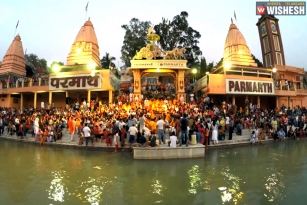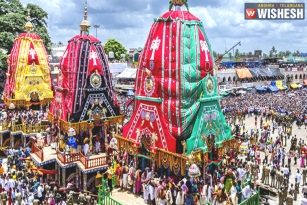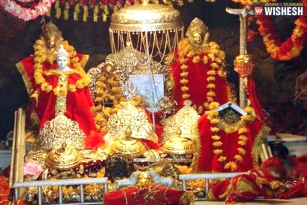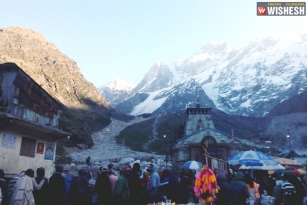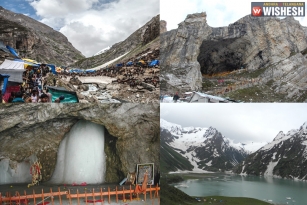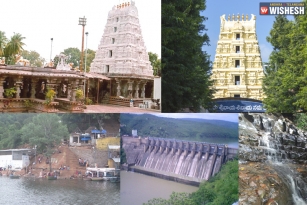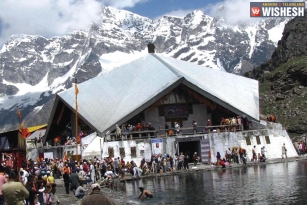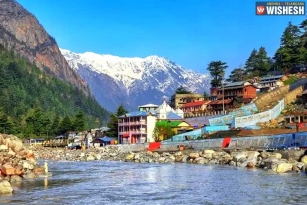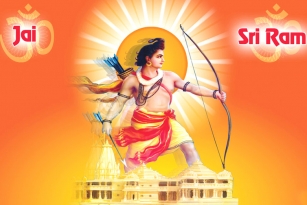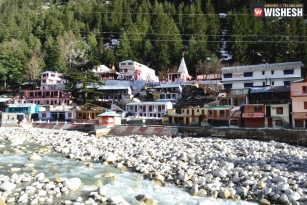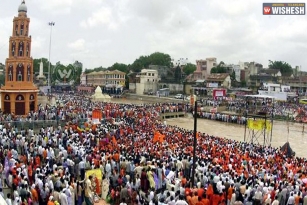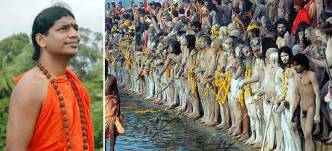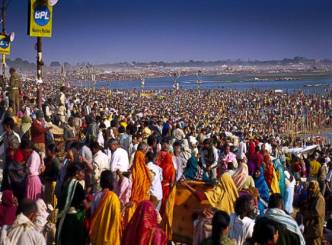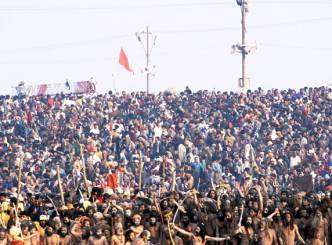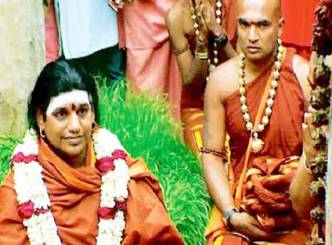
The Holy Kumbh Mela, “Simhastha” will be organized at Ujjain from 22nd April to 21st May 2016.
Kumbh Mela history
Kumbh Mela is believed to be first written in the accounts of Chinese Monk Xuanzang (alternately Hsuan Tsang), who visited India in 629-645 CE, during the reign of King Harshavardhana.
Celebrating the river festivals is however, not new and is always there, since centuries. According to medieval Hindu theology, its origin is found in one of the most popular medieval puranas, the Bhagavata Purana.
The Bhagavata Purana, the Vishnu Purana, the Mahabharata, and the Ramayana, were mentioned with the Samudra manthan episode (Churning of the ocean of milk).
History says that, by the curse of Durvasa Muni, Devas had lost their strength and approached Lord Brahma and Lord Shiva to regain it.
They directed all the demigods to Lord Vishnu (full story on kumbh mela) and after praying to the Lord, he instructed them to churn the milk ocean, Ksheera Sagara (primordial ocean of milk) to receive amrita (the nectar of immortality).
For this, they had to enter into a temporary agreement with their arch rivals, the Asuras, to share the wealth equally thereafter. The Mandara Mountain was used as the churning rod for churning the milk ocean and Vasuki, the king of serpents, became the rope for churning.
For about 1000 years, they churned the ocean, where demons were holding Vasuki's head and Gods, the tail. Finally after the process got completed, Dhanwantari appeared with Kumbh in his palms.
However, a fight ensued, when the Kumbh containing the amrita appeared. To prevent the amrita from losing to demons, its safety was entrusted to Gods Brihaspati, Surya, Shani and Chandra. After learning the conspiracy of the Devtas, demons turned vicious and attacked them. Devtas knew that demons are more powerful and can easily defeat them.
Left with no option, the Devtas then decided to hide it, running away and in this process, they were chased by Asuras, following Devas and Asuras fought for 12 days and 12 nights (equivalent to twelve human years), in the sky for the pot of Amrita.
It was during this battle, it is believed that, some drops of Amrita fell down from Kumbh at four places- Allahabad (Prayag), Haridwar, Ujjain and Nasik.
As 12 days of gods are equivalent to 12 years for humans, the Kumbh Mela is celebrated, once every 12 years in each of the four places - banks of river Godavari in Nasik, river shipra in Ujjain, river Ganges in Haridwar, and at the Sangam of Ganges, Yamuna, and Saraswati in Allahabad.
Kumbh Mela- World’s largest religious gathering
Being the mass Hindu pilgrimage of faith, in which Hindus gather to bathe in a sacred river, Kumbh Mela has emerged as the world’s largest religious gathering.
Every third year, Kumbh Mela will be held at one of the four places by rotation. It is thus, held at each of the four places- Haridwar, Allahabad (Prayag), Nasik and Ujjain, every 12th year.
Only in Haridwar and Allahabad, Ardh (half) Kumbh Mela will be held, every 6th year. The rivers at these four places are: the Ganges at Haridwar, the confluence (Sangam) of the Ganges and the Yamuna and the mythical Saraswati at Allahabad, the Godawari at Nasik, and the Shipra at Ujjain.
At Nasik and Ujjain, Mela may be held, while a planet is in Leo (Simha in Hindu astrology) and it is thus called “Simhastha”.
”Kumbh” means a pitcher and “Mela” means fair in Hindi. For about one and a half months, the pilgrimage will be held, in 4 places. In the last Kumbh Mela held at Allahabad in 2013, around 100 million people have attended it.
Significance of Kumbh Mela
As per the position of Sun and Jupiter in different Zodiac signs, the celebration of Kumbh Mela takes place at the four sacred places. Poorna Kumbh is held at Ujjain, when the zodiac sign Scorpio indicates the presence of Jupiter and Sun.
The unique combination of divinity and purity is experienced when the crowd of ash-dubbed sages, priests, devotees gets fused together with the roaring of elephants and camels.
It is widely believed that, witnessing Kumbh Mela would bring good fortune and sense positive aroma, purifying their souls and thoughts.
Shahi Snan (Royal bath) is the major attraction of this festival. The devotees who take royal bath in holy Shipra river during Kumbh Mela, are believed to wash all their sins of all previous births.
The devotees consider it as an opportunity to get them revived from the never ending birth cycle.
Ujjain Kumbh Mela main bathing dates
| 22 April 2016 (Friday) | Purnima First Sahi Snaan (First Royal Holy Dip) |
| 03 May 2016 (Tuesday) | Vratparv Vauthini Ekadashi |
| 06 May 2016 (Friday) | Vaishakh Krishna Amavasya (First Pramukh Snan) |
| 09 May 2016 (Monday) | Shukla/Akshey Tritya (Second Pramukh Snan) |
| 11 May 2016 (Wednesday) | Shukla Panchami |
| 15 May 2016 (Sunday) | Vrishabh Sankranti |
| 17 May 2016 (Tuesday) | Ekadashi & Pradosh Snan |
| 19 May 2016 (Thursday) | Pradosh |
| 20 May 2016 (Friday) | Nursingh Jayanti |
| 21 May 2016 (Saturday) | Purnima Mukhya Shahi Snan (Main Royal Bath) |
Kumbh Mela has traditionally provided platform to the religious leaders and thinkers to engage in dialogue on matters both spiritual and temporal relevant to their contemporary times.
Do not miss the opportunity, make a visit and embrace your soul and material body, with the sacred nectar bestowed by God.
By Phani Ch


